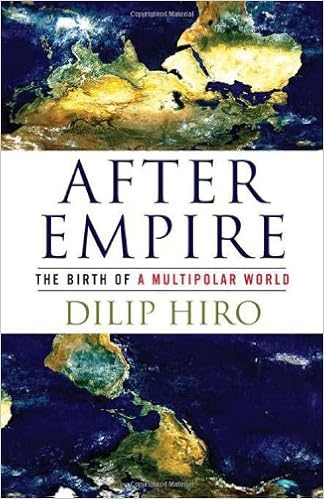by DILIP HIRO

Don’t Ask Donald Trump
For the Trump administration’s senior officials, it’s been open season on bashing China. If you need an example, think of the president’s blame game about “the invisible Chinese virus” as it spreads wildly across the U.S.
When it comes to China, in fact, the ever more virulent criticism never seems to stop.
Between the end of June and the end of July, four members of his cabinet vied with each other in spewing anti-Chinese rhetoric. That particular spate of China bashing started when FBI Director Christopher Wray described Chinese President Xi Jinping as the successor to Soviet dictator Joseph Stalin. It was capped by Secretary of State Mike Pompeo’s clarion call to U.S. allies to note the “bankrupt” Marxist-Leninist ideology of China’s leader and the urge to “global hegemony” that goes with it, insisting that they would have to choose “between freedom and tyranny.” (Forget which country on this planet actually claims global hegemony as its right.)
At the same time, the Pentagon deployed its aircraft carriers and other weaponry ever more threateningly in the South China Sea and elsewhere in the Pacific. The question is: What lies behind this upsurge in Trump administration China baiting? A likely answer can be found in the president’s blunt statement in a July interview with Chris Wallace of Fox News that “I’m not a good loser. I don’t like to lose.”
The reality is that, under Donald Trump, the United States is indeed losing to China in two important spheres. As the FBI’s Wray put it, “In economic and technical terms [China] is already a peer competitor of the United States… in a very different kind of [globalized] world.” In other words, China is rising and the U.S. is falling. Don’t just blame Trump and his cronies for that, however, as this moment has been a long time coming.
Facts speak for themselves. Nearly unscathed by the 2008-2009 global recession, China displaced Japan as the world’s second largest economy in August 2010. In 2012, with $3.87 trillion worth of imports and exports, it overtook the U.S. total of $3.82 trillion, elbowing it out of a position it had held for 60 years as the number one cross-border trading nation worldwide. By the end of 2014, China’s gross domestic product, as measured by purchasing power parity, was $17.6 trillion, slightly exceeding the $17.4 trillion of the United States, which had been the globe’s largest economy since 1872.
In May 2015, the Chinese government released a Made in China 2025 plan aimed at rapidly developing 10 high-tech industries, including electric cars, next-generation information technology, telecommunications, advanced robotics, and artificial intelligence. Other major sectors covered in the plan included agricultural technology, aerospace engineering, the development of new synthetic materials, the emerging field of biomedicine, and high-speed rail infrastructure. The plan was aimed at achieving 70% self-sufficiency in high-tech industries and a dominant position in such global markets by 2049, a century after the founding of the People’s Republic of China
Semiconductors are crucial to all electronic products and, in 2014, the government’s national integrated circuit industry development guidelines set a target: China was to become a global leader in semiconductors by 2030. In 2018, the local chip industry moved up from basic silicon packing and testing to higher value chip design and manufacturing. The following year, the U.S. Semiconductor Industry Association noted that, while America led the world with nearly half of global market share, China was the main threat to its position because of huge state investments in commercial manufacturing and scientific research.
By then, the U.S. had already fallen behind China in just such scientific and technological research. A study by Nanjing University’s Qingnan Xie and Harvard University’s Richard Freeman noted that between 2000 and 2016, China’s share of global publications in the physical sciences, engineering, and math quadrupled, exceeding that of the U.S.
Tom Dispatch for more
